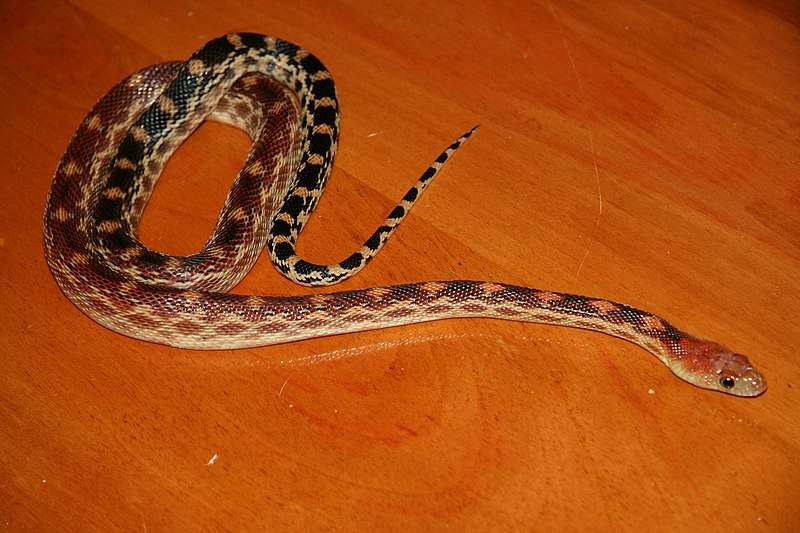
Description:
Scientific name: Pituophis vertebralis
Life span: 10-15 years
The Baja California Peninsula serves as the name of the Cape gopher snake’s native environment.
Over the length of its body, a single Cape gopher snake can display irrational colour and pattern differences. The majority start with vivid H-shaped marks in various colors of orange against a brilliant yellow background. The patterns begin to change in shape as they are traced down near the tip of the tail and deepen until they are entirely black, while the yellow background becomes less intense. The familiar markings of the P. vertebralis species appear first as black stripes on the patterns of other Cape gopher snakes.
Native Region/Habitat
The majority of knowledge regarding Cape gopher snakes’ range is anecdotal, yet it is a remarkably diversified region. UNESCO as a global biosphere reserve declared the Sierra de la Laguna, which dominates the landscape and is covered in cacti, because it “represents very important and contrasting ecosystems.” It also contains dry tropical forests, arid tropical scrub, desert shores, and a Sonoran-like desert. This region is infamous for going months or even years without rain, but in only one week, a tropical storm or hurricane may overwhelm it with floodwaters.
Behavior:
Juvenile Cape gopher snakes can get irritated and aggressive very quickly. Although each snake’s attitude is different, a baby snake is unusual in that it frequently bites anything that moves. This violent conduct is transient. Once they get over this stage, they become noticeably more submissive and hardly never attack (food is an exception). Yet, handling Cape gopher snakes is said to make them anxious. They don’t move, but eventually they squirm and become active again before abruptly becoming still and repeating the cycle.
Care As a pet/In captivity:

Enclosure: For growing snakes, a 20-gallon long tank or a 28 quart tub works great. Adult smaller animals can survive in 41-quart tubs or 30-gallon tanks, while larger creatures thrive in four-foot-long cages. Due to their high activity level, they need a little more room than some other snakes of a comparable size, but they will make excellent show pets if you give them the extra space!
Water and Humidity: Water that is always fresh and unchlorinated should be available. They should be able to soak in it and it should be heavy enough to prevent them from tipping it over.
Diet: Both kinds of feeders are available online or in the majority of pet stores. Hatchlings initially eat mice, but as they grow older, they switch to rats.
Table





